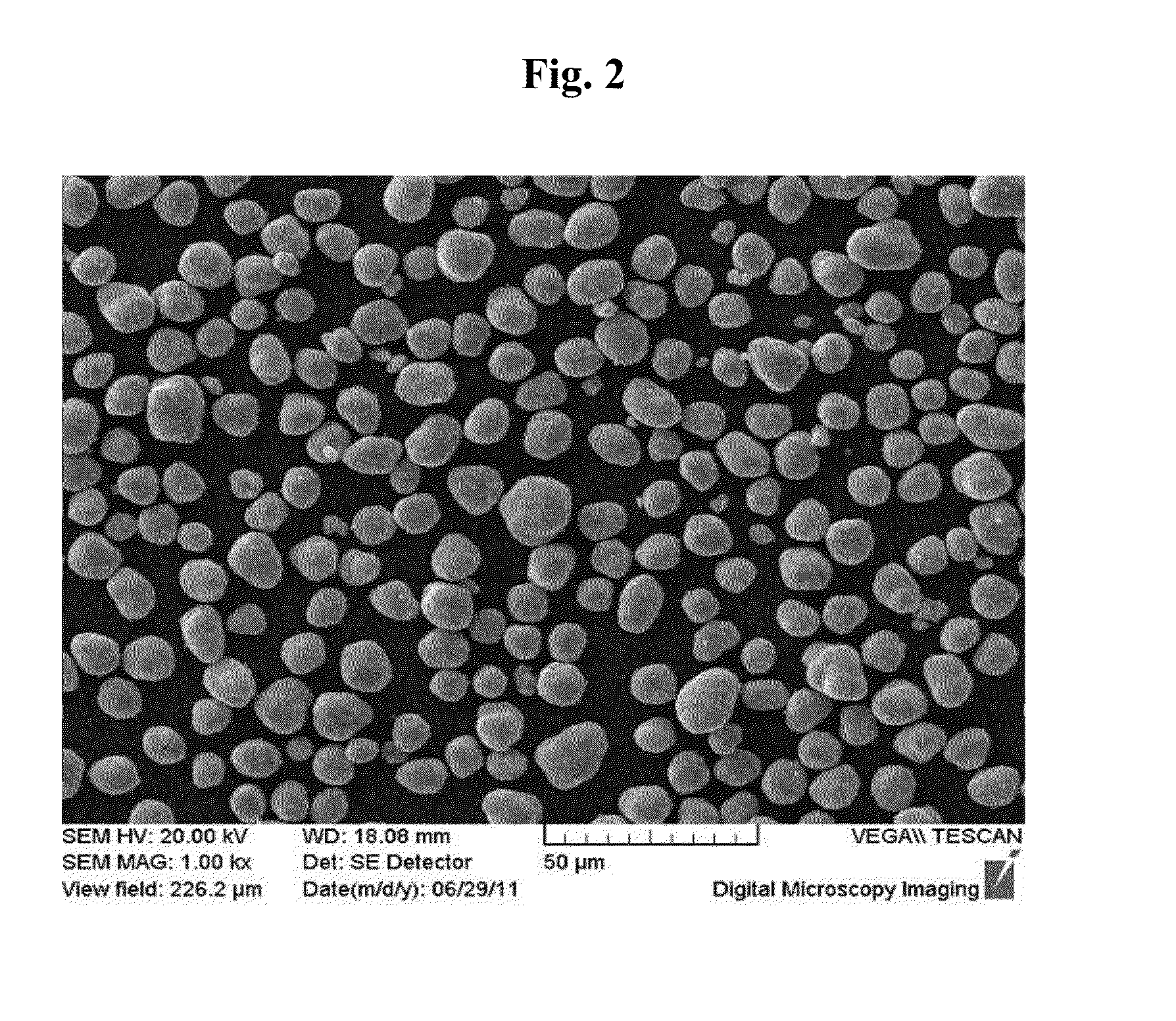Method for manufacturing anode active material for lithium secondary battery, anode active material for lithium secondary battery manufactured thereby and lithium secondary battery using same
a lithium secondary battery and anode active material technology, applied in the direction of non-aqueous electrolyte accumulator electrodes, sustainable manufacturing/processing, climate sustainability, etc., can solve the problems of high cost and safety, poor thermal stability, low deposit of co, etc., to achieve excellent lifespan, high capacity, and high stability
- Summary
- Abstract
- Description
- Claims
- Application Information
AI Technical Summary
Benefits of technology
Problems solved by technology
Method used
Image
Examples
example 1
Bi-Layered Structure, not Treated by Heat
[0083]1. Synthesis of Center Part
[0084]2.5 M Nickel sulfate 6-hydrate (NiSO4.6H2O) and cobalt sulfate 7-hydrate (CoSO4.7H2O) and manganese sulfate monohydrate (MnSO4.H2O) were mixed to obtain a mixed metal solution having Ni:Co:Mn molar ratio of 28:12:60. At this time, a continuous reactor of internal volume of 90 L filled with 1 M aqueous ammonia solution was used, and pH of the initial solution was in a range of 11˜12. The prepared 2.5 M nickel / cobalt / manganese mixed metal solution and 28% ammonia water and 25% sodium hydroxide solution were stirred at 500 rpm while inserting nitrogen and continuously inserted using a metering pump at the same time. At this time, a continuous reaction was conducted by keeping the temperature in the reactor at 50° C., by inserting the mixed metal solution and the ammonia water at the rate of 7 L / hr and 1.0 L / hr, respectively, and by controlling the amount of the sodium hydroxide to maintain the pH of 11˜12. ...
example 2
Heat-Treated Bi-Layered Structure
[0091]The bi-layered structure material synthesized in Example 1 was heat-treated at 600° C. for 2 hours under air atmosphere.
PUM
| Property | Measurement | Unit |
|---|---|---|
| particle diameter | aaaaa | aaaaa |
| particle diameter | aaaaa | aaaaa |
| thickness | aaaaa | aaaaa |
Abstract
Description
Claims
Application Information
 Login to View More
Login to View More - R&D
- Intellectual Property
- Life Sciences
- Materials
- Tech Scout
- Unparalleled Data Quality
- Higher Quality Content
- 60% Fewer Hallucinations
Browse by: Latest US Patents, China's latest patents, Technical Efficacy Thesaurus, Application Domain, Technology Topic, Popular Technical Reports.
© 2025 PatSnap. All rights reserved.Legal|Privacy policy|Modern Slavery Act Transparency Statement|Sitemap|About US| Contact US: help@patsnap.com



